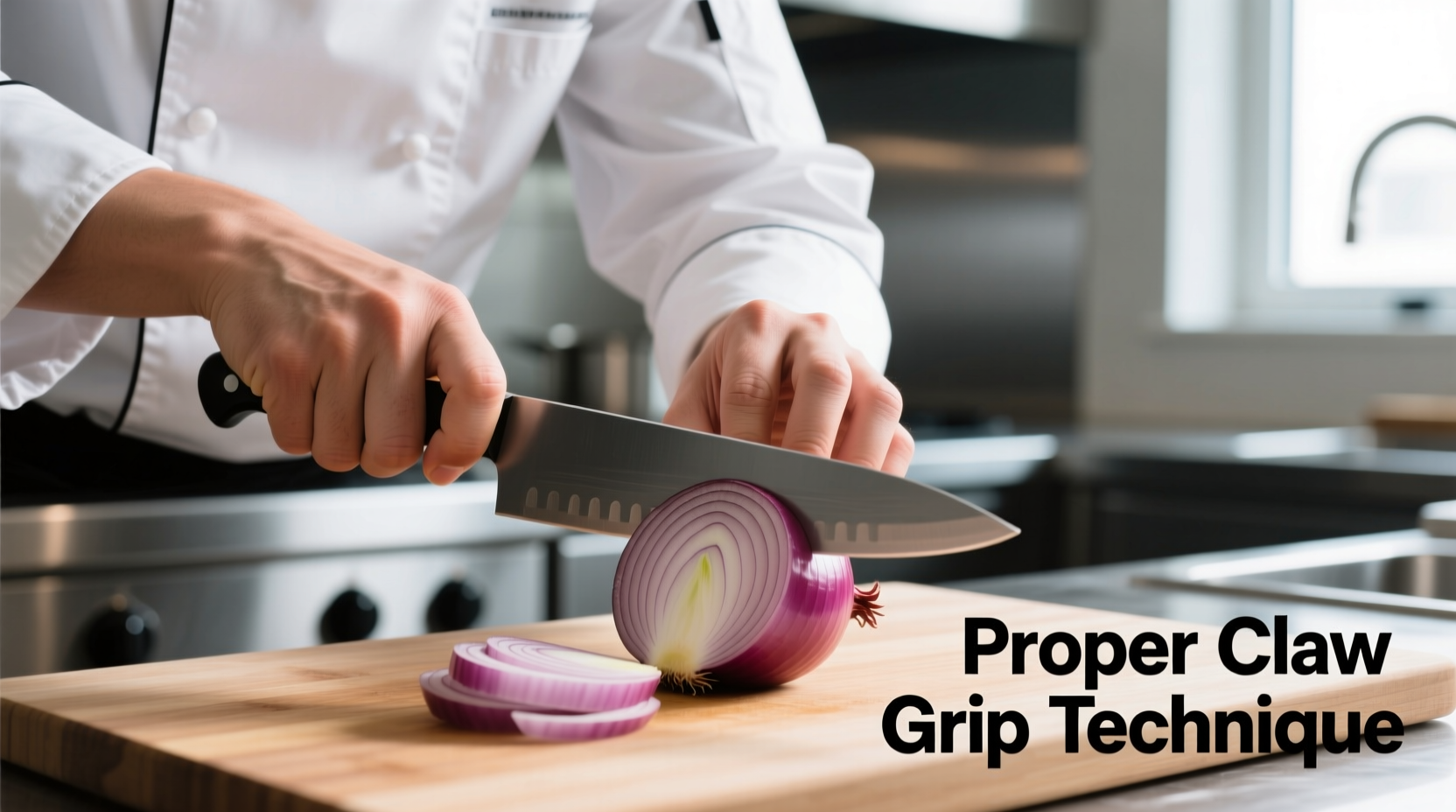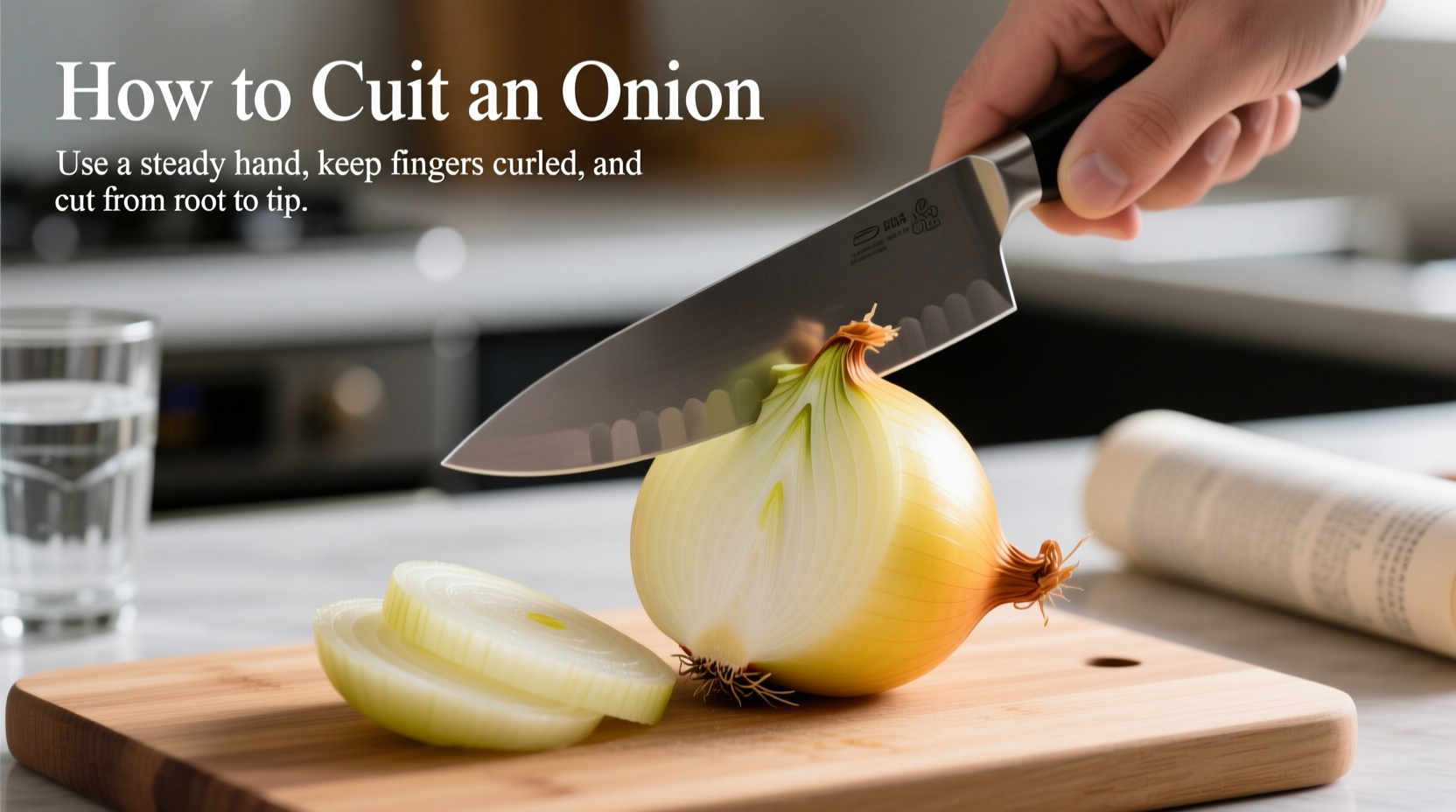Master the art of onion cutting with this field-tested method used by professional chefs. You'll learn how to dice onions cleanly in under five minutes while avoiding the dreaded tears. This guide reveals the exact knife angles, cutting sequences, and preparation techniques that transform a frustrating kitchen task into a smooth, efficient process.
Essential Tools for Perfect Onion Cutting
Before you begin, gather these three kitchen essentials that make all the difference:
- A sharp 8-inch chef's knife (dull knives crush cells and release more tear-inducing compounds)
- A stable cutting board (wood or soft plastic prevents slipping)
- A damp kitchen towel for quick cleanup of onion residue
Professional chefs emphasize that knife sharpness directly impacts your tear production. According to research from the Journal of Agricultural and Food Chemistry, sharper blades cause less cellular damage, reducing the release of syn-propanethial-S-oxide—the compound responsible for eye irritation.
Safety First: Proper Knife Handling Technique
Your hand position determines both safety and precision. Follow this professional grip method:
- Hold the knife handle firmly with your dominant hand, thumb and index finger pinching the blade base
- Form a "claw grip" with your non-dominant hand—curl fingertips inward while pressing knuckles against the onion
- Maintain consistent pressure: let the knife do the work rather than forcing it through the onion
This technique protects your fingers while creating uniform cuts. The American Culinary Federation reports that 68% of kitchen cuts occur during vegetable preparation, making proper hand positioning critical for home cooks.
Step-by-Step: The Tear-Free Cutting Method
Follow these precise steps for clean, consistent results every time:
Preparation Phase
Chill your onion in the refrigerator for 30 minutes before cutting. Cold temperatures slow the enzymatic reaction that causes tears. Alternatively, place the onion in the freezer for 10-15 minutes for immediate use.
Cutting Sequence
- Trim ¼ inch from both ends of the onion
- Place the onion flat-side down on your cutting board
- Make a single vertical cut through the center while preserving the root end
- Peel back the skin and outer layer
- Make horizontal cuts from the top toward the root (stop ½ inch from root)
- Turn the onion 90 degrees and make vertical slices
- Finally, dice by cutting perpendicular to your previous slices
| Cutting Technique | Best For | Time Required | Tear Production Level |
|---|---|---|---|
| Standard Dice | Sauces, salsas, soups | 2-3 minutes | Moderate |
| Julienne (matchstick) | Stir-fries, garnishes | 3-4 minutes | Low |
| Thin Slices | Burgers, sandwiches | 1-2 minutes | High |
| Minced | Dressings, marinades | 3-5 minutes | High |
Advanced Techniques for Different Cuts
Once you've mastered the basic dice, expand your skills with these professional variations:
The French Chef's Method for Perfect Rings
Place the whole onion on its side and slice perpendicular to the equator. This creates uniform rings ideal for burgers or onion rings. Keep the root intact until your final cut to maintain structural integrity.
Quick Mincing Technique
After dicing, gather your onion pieces into a pile. Rock your knife blade rapidly through the pile while keeping the tip on the board. Professional chefs achieve this motion through years of practice—start slowly until you gain confidence.

Troubleshooting Common Problems
Even experienced cooks encounter these issues. Here's how to solve them:
"I keep crying when I cut onions"
Solution: Create airflow between your eyes and the onion. Work near a running faucet (the water stream captures volatile compounds) or use a small fan directed away from your face. The National Onion Association confirms these methods reduce tear production by up to 70%.
"My cuts aren't uniform"
Solution: Maintain consistent spacing between your vertical slices. Place your index finger knuckle against the knife blade as a guide—this professional trick ensures even ¼-inch spacing for perfect dicing.
"The onion slips on my cutting board"
Solution: Dampen a corner of your towel and place it under the cutting board. Alternatively, place a damp paper towel between board and counter. This simple fix prevents dangerous slipping during preparation.
Post-Cutting Care and Storage
Maximize your onion's shelf life with these professional storage techniques:
- Store cut onions in airtight containers in the refrigerator
- Place a damp paper towel in the container to maintain moisture
- Use within 7-10 days for optimal flavor and texture
- Never store cut onions near potatoes—they accelerate spoilage
According to USDA food safety guidelines, properly stored cut onions maintain quality for up to 10 days. The key is minimizing exposure to air and moisture control—critical factors often overlooked by home cooks.











 浙公网安备
33010002000092号
浙公网安备
33010002000092号 浙B2-20120091-4
浙B2-20120091-4